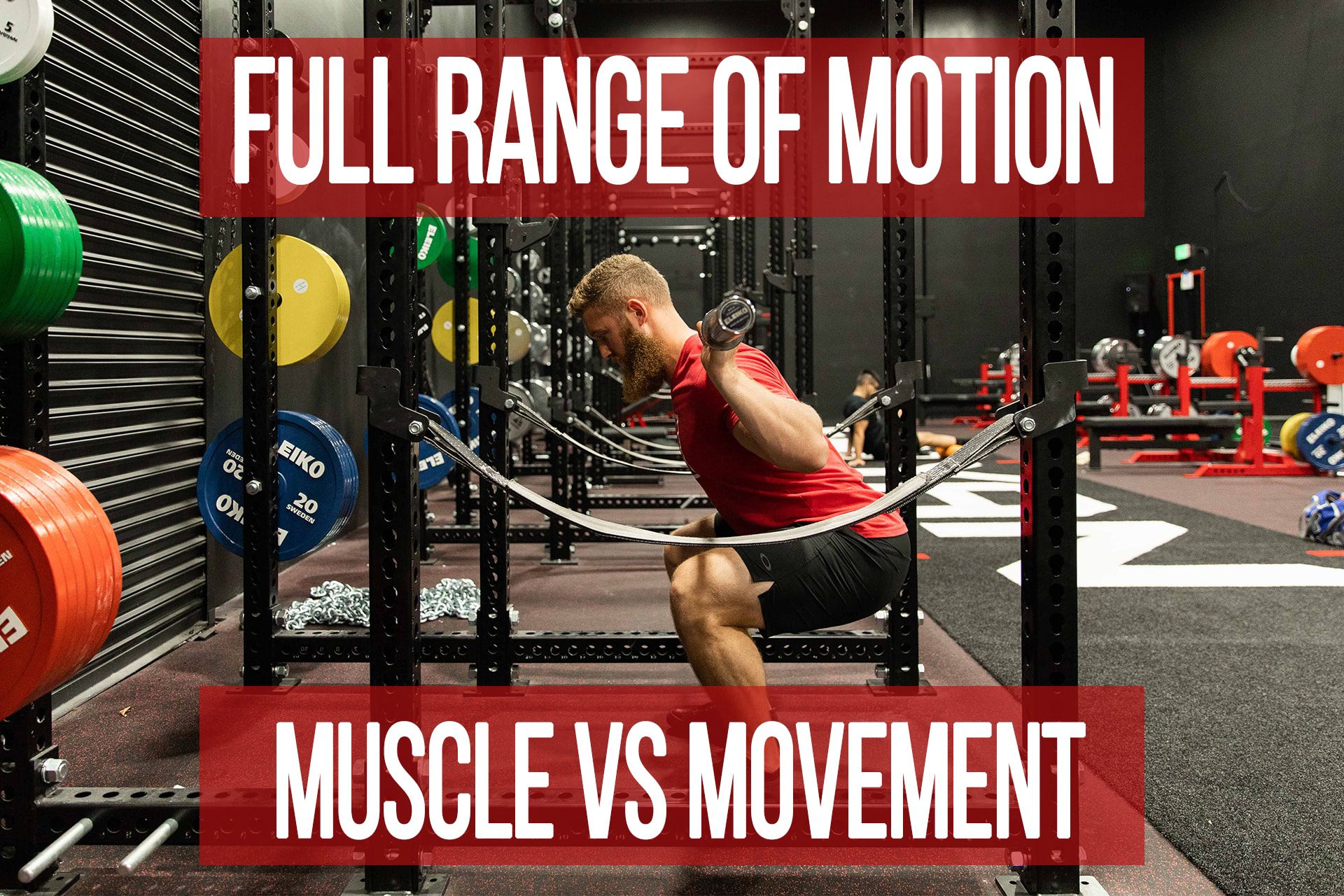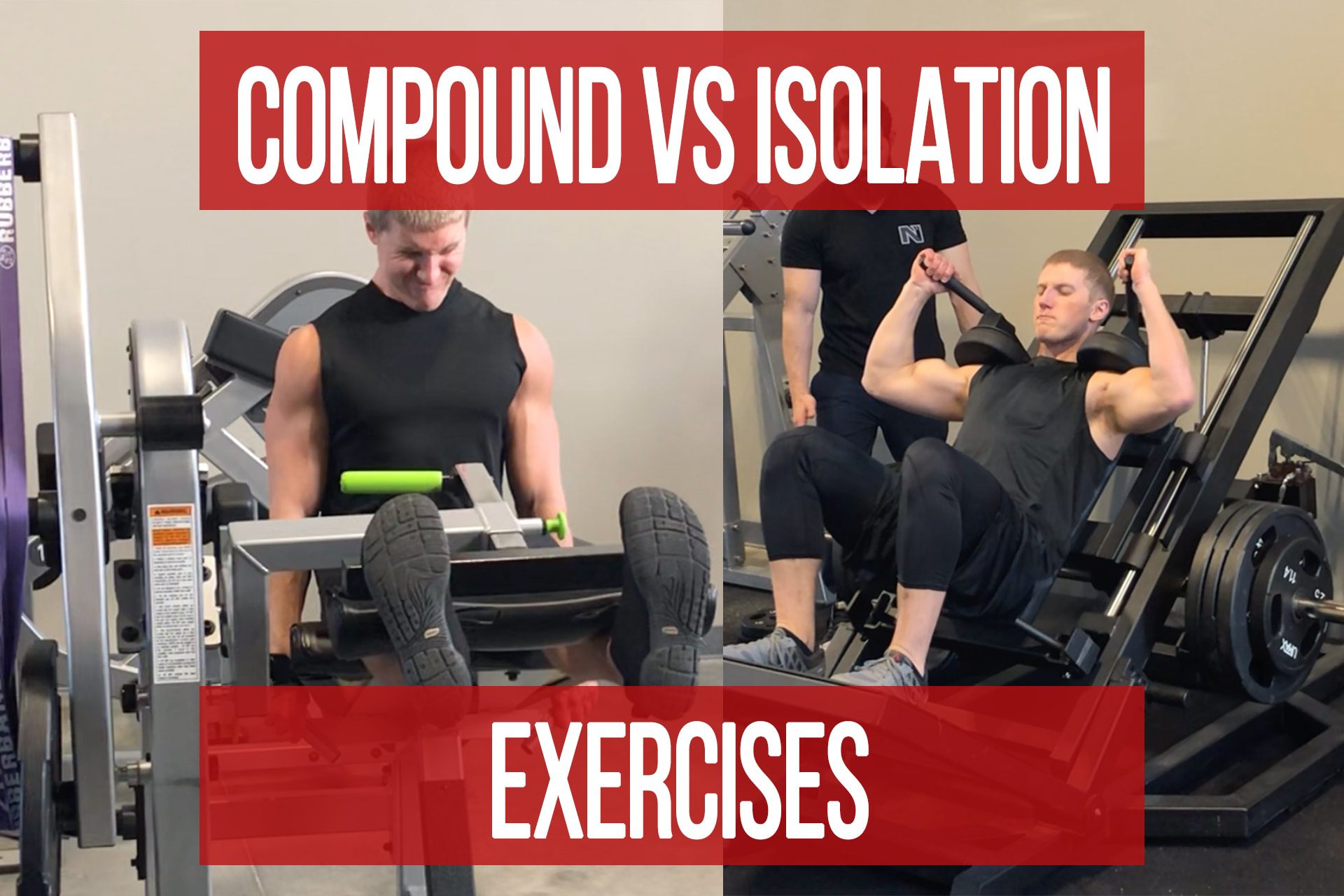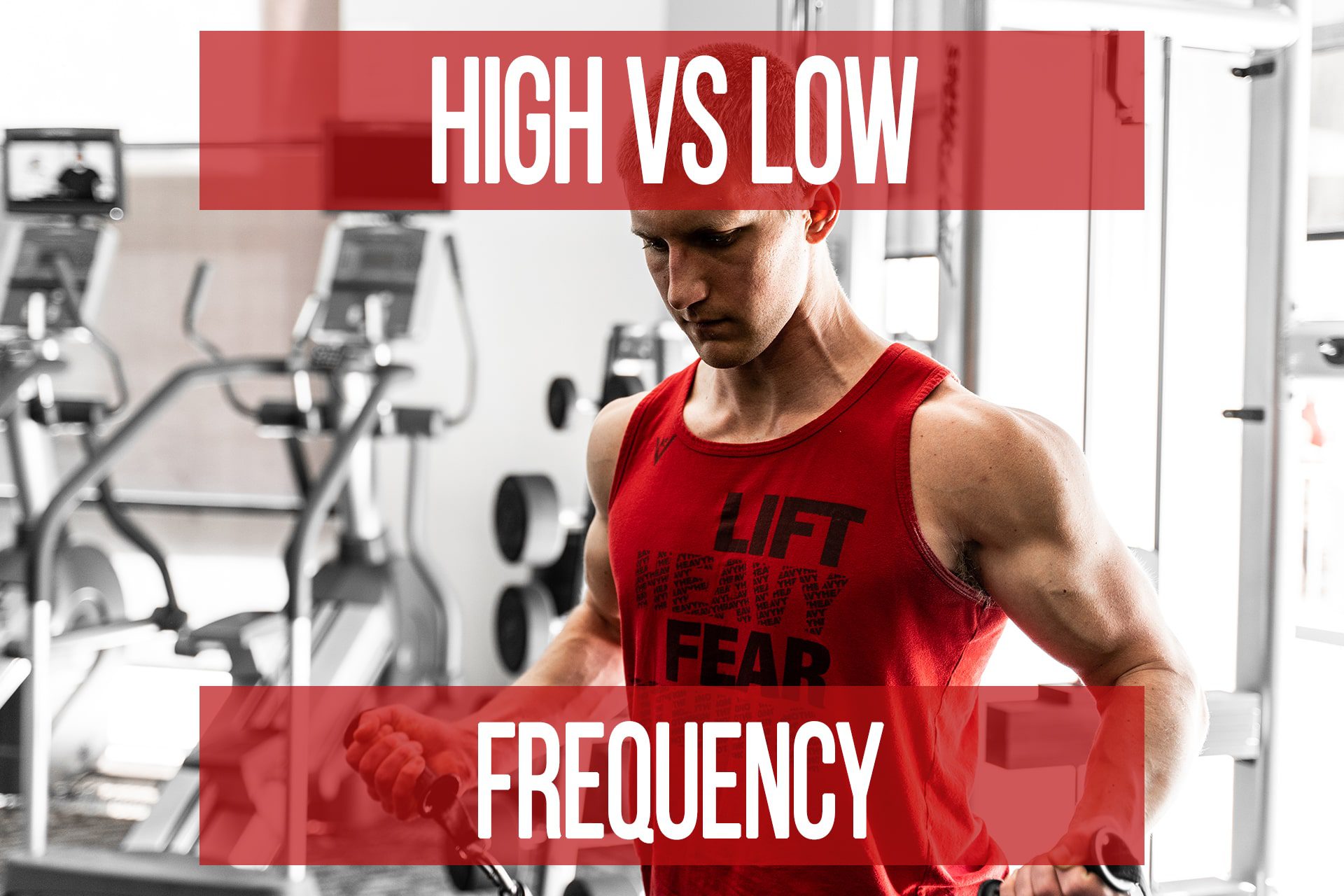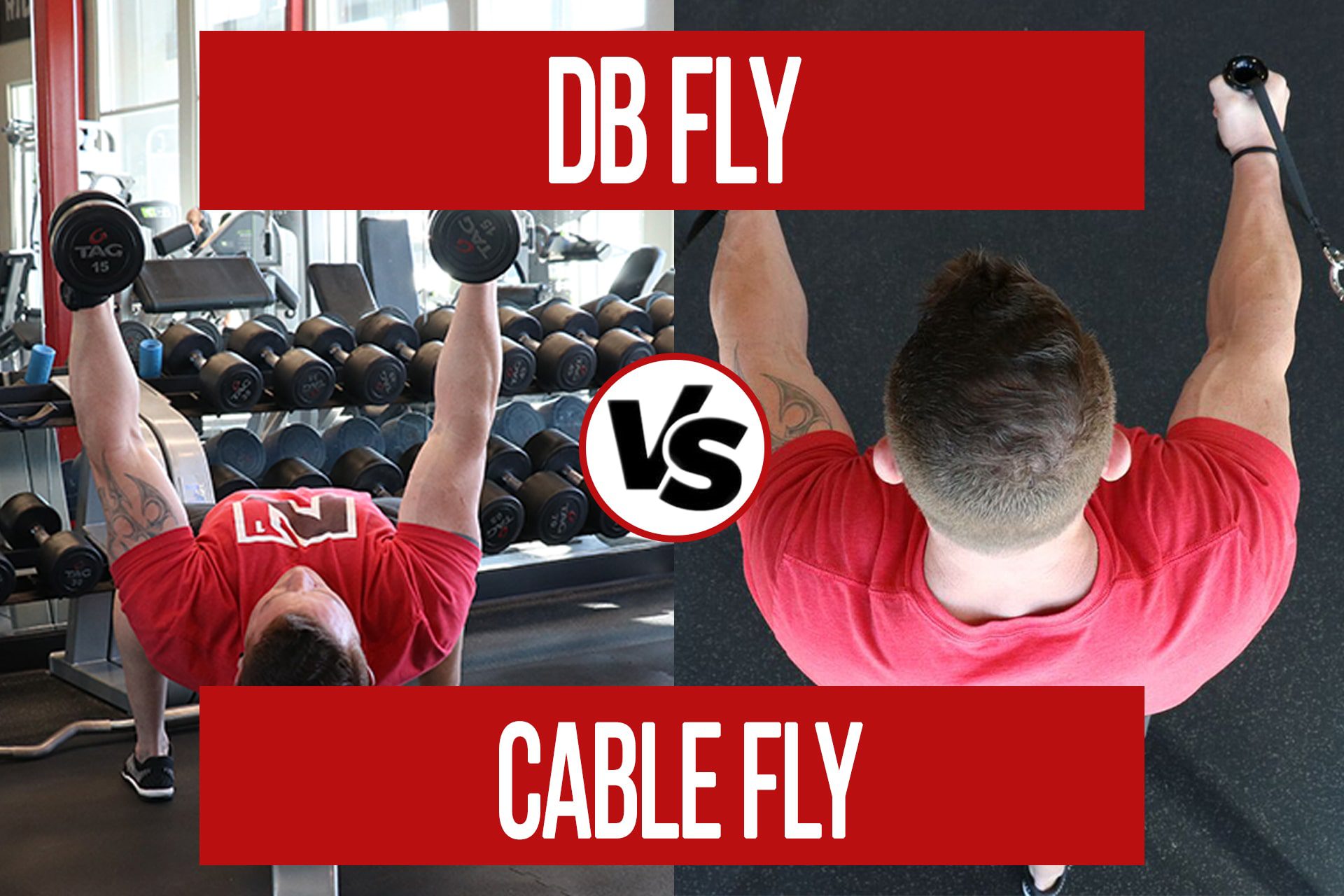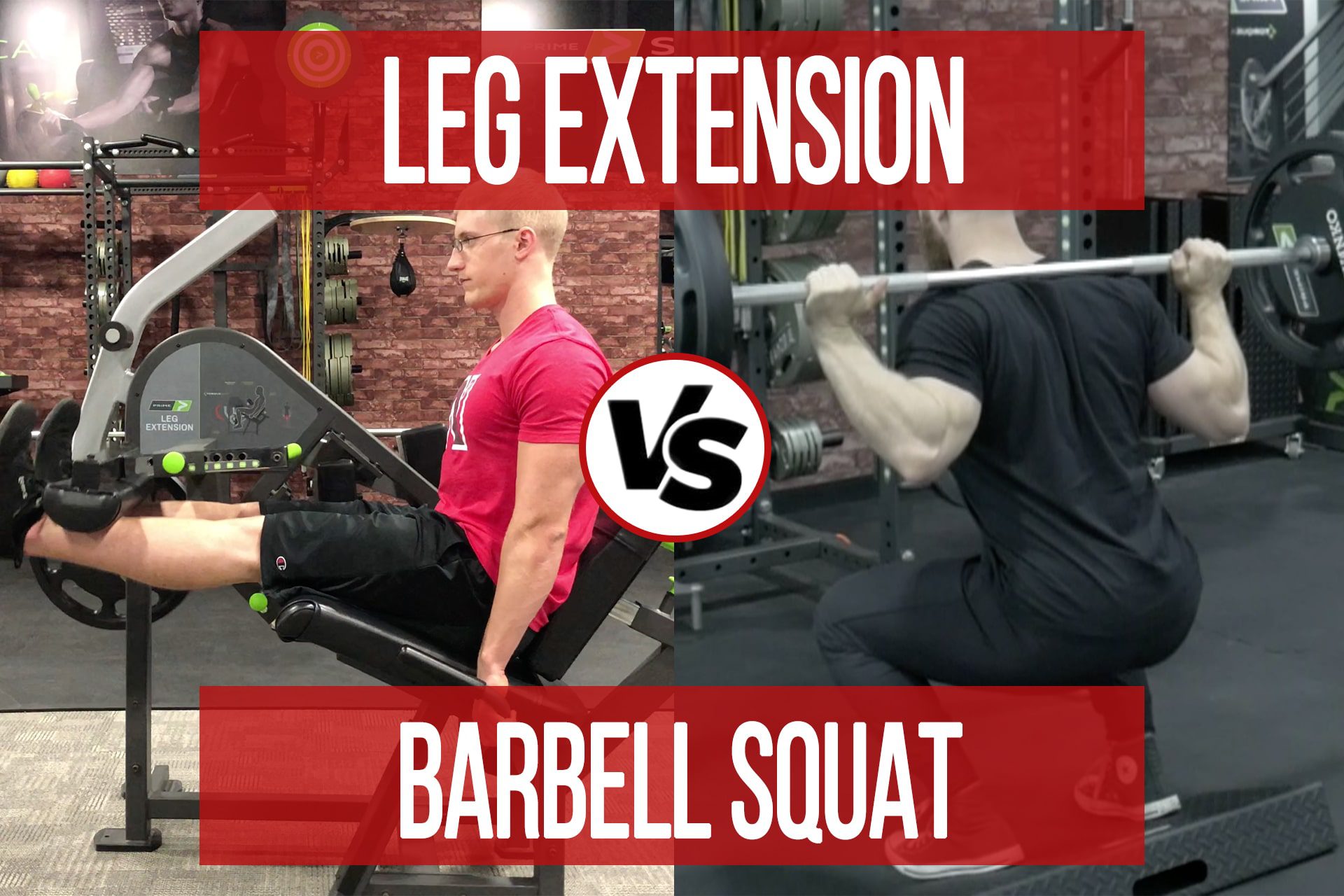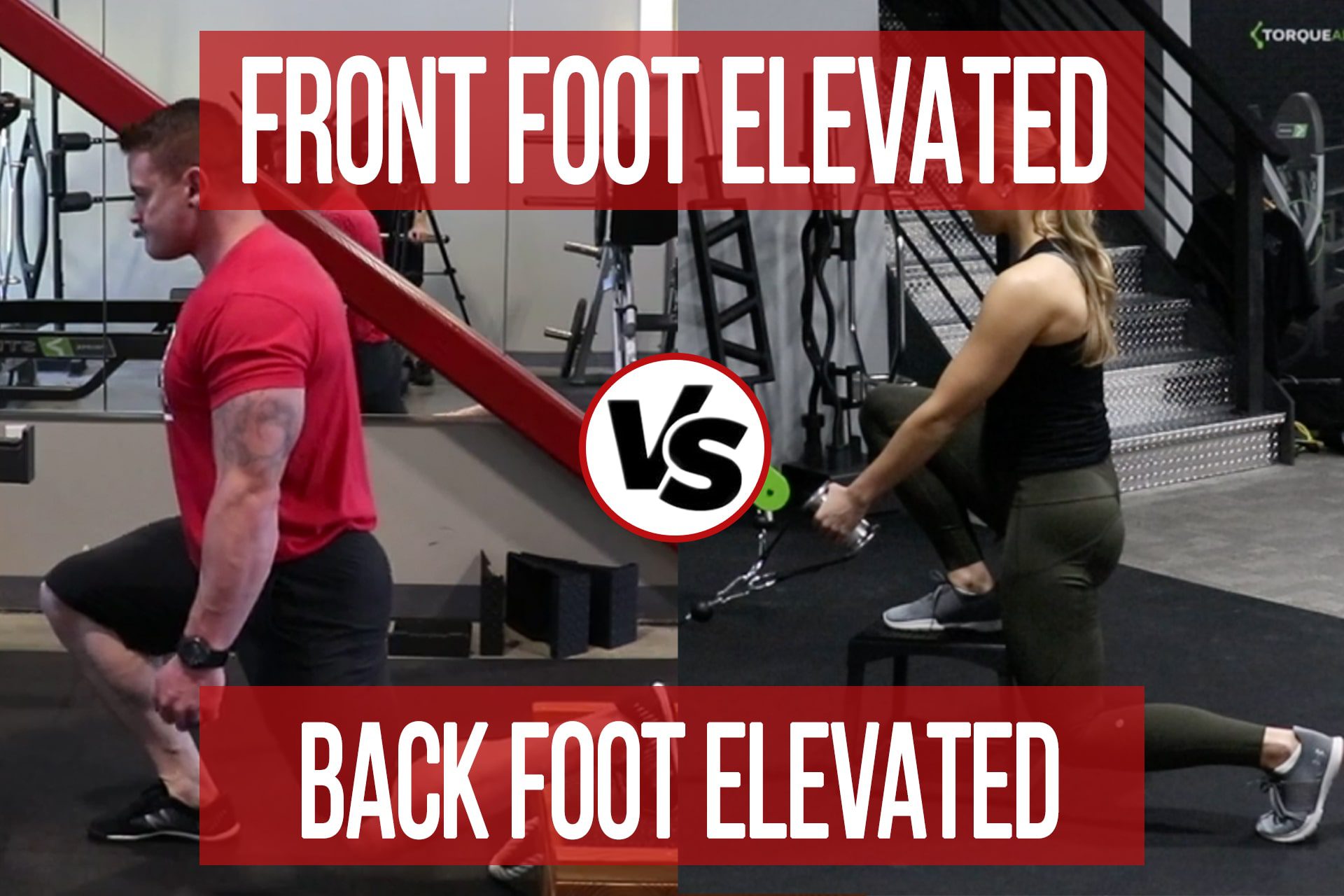Seated Leg Curl vs RDL
n1 training
When programming the RDL or the Seated Leg Curl we must consider the differences in these two great hamstring developers. They have many similarities in :
- Range of Motion trained. The RDL and Seated Leg Curl both train the hamstrings in their lengthened position.
- Points of overload. The RDL and the Seated Leg Curl can both be overloaded in the lengthened position; that is assuming you have a decent seated leg curl with a good resistance profile on it. More on this later. If the Seated Leg Curl resistance profile is not this way the hamstrings are still trained in the lengthened position they just may not be overloaded there.
When it comes to programming these two movements we must look at the differences between them to help us decide which one we would use or even both.
Primary function: The hamstrings are a bi-articular muscle (crossing two joints), the knee and the hip. This gives the hamstrings two main functions: knee flexion and hip extension. This is the first thing that begins to separate these two exercises. The RDL will train the hamstrings in their hip extension function and the Seated Leg Curl trains the hamstrings in their knee flexion component.
Glutes: The RDL is not only a hamstring exercise, the glutes will work here too. If you want to train the hamstrings in the lengthened position and you would like to get some glute work in the RDL can be an excellent choice to “double dip” a bit as the glutes will be trained in their mid range during the RDL.
Spinal loading: “You only have one spine.” When choosing the RDL or the Seated Leg Curl when wanting to train the hamstrings in their lengthened position you must consider if you have loaded the spine in the programed day already or not.
If you have already done squats in your program, spinal stabilizers may be fatigued to the point where you cannot optimally stabilize the pelvis and spine for an integrated movement like the RDL. Poor or fatigued spinal/pelvic stability will lead to lower output from the hamstrings and a sub-par training effect for the hamstrings. I am not saying you can’t ever do RDLs and squats in the same day. But you must be aware of the spinal load that occurs in these movements and its effect on the training day. You better be a strong, well-conditioned person when it comes to spinal stability to do both spinal loaded exercises on the same day.
Spinal stability: Beginners often have a difficult time learning to stabilize the spine and the RDL will directly challenge this. When training a beginner and you want to train the lengthened position of the hamstrings with any form of output then the Seated Leg Curl may be a better option for them. The Seated Leg Curl is far less complex where beginners can still go and get plenty of work done. This can all be done while they are continuing to work on their spinal stability and hip hinge separately.
The RDL and the Seated Leg Curl both have great application in all types of training stimuli, but some things must be considered when choosing between the two:
Systemic Training: When training for a systemic stimulus the RDL can be a fantastic choice for programming. It is an integrative movement involving a ton of musculature all contracting and dumping metabolites into the bloodstream. This is the goal of systematic training, but the RDL is a complex movement that must be executed very well in high amounts of fatigue in order for this to happen and beginners/novices may have a hard time with this. For them the Seated Leg Curl may be a better option.
Neurological Training: The goal of neurological training is not only load, it is to get the muscle to its lengthened position, overload it there and contract intensely from that position. The RDL does exactly this in hip extension while the Seated Leg Curl does exactly this in knee flexion.
Which one is better? What do you want to do? Are you doing another exercise in your program for hip extension? No. Then the RDL is your better choice. If you are already doing something for hip extension like squats then the Seated Leg Curl is your better choice for that day. If you want to do both RDLs and Squats in your Neurological program then I would advise them on different days with an appropriate number of rest days in between.
Hypertrophy Training: Hypertrophy training lends itself to many different types of same muscle supersets: pre and post exhaust, shortened-lengthened etc. Choosing the right combination for the same muscle group is crucial for the stimulus of the superset.
RDLs with Lying Hamstring Curl
A great combination for many supersets. This combination will train the full range of motion of the hamstrings with the RDL training the lengthened position and the Lying Leg Curl training the short position. This combination will also train the hamstrings in both of its functions, knee flexion and hip extension.
Seated Leg Curl and Lying Leg Curl
This combination will train the full range of motion of the hamstrings in their knee flexion component with the Seated Leg Curl training the lengthened position and the Lying Leg Curl training the short position.
RDL and Seated Leg Curl
This is just an f-you to the lengthened position of the hamstring. By overloading the hamstring in the lengthened position with the RDL and then training the hamstrings their again in the Seated Leg Curl will cause high amounts of mechanical damage to the muscle belly. This may be perfectly fine if your program is set up for more mechanical damage with proper training frequency.
Waist Line: This is something we see quite often here at N1. Poorly executed RDLs done with more low back than hamstrings or glutes will lead to hypertrophied spinal erectors. RDLs done with poor spinal stability will lead to an inappropriate amount of tension on “other” core musculature. This combination of hypertrophied spinal erectors and in appropriate core musculature leads to a disproportionate waistline when compared to the rest of the physique.
Traps: The RDL or any of its variations will all load the traps. This can lead to bigger traps and this may be something you are going for or it may be something you do not want. If you want to limit trap growth then you may have to limit how often you program the RDL in your workouts and the Seated Leg Curl may be a better option.
Understanding the differences between exercises is a critical component of intelligent exercise selection to match up for the goal of your training. Learn more about comparing exercises by using the features in the Exercise Library. It will show you all of the different characteristics of each exercise that you can compare.
Introduction
The goal of these “versus” posts is not to say that one exercise is absolutely better than another. Rather, it is to give you some insight in to which exercise might be better suited for a particular situation or for a specific training stimulus.
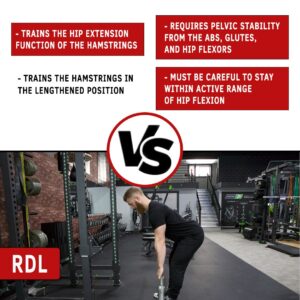
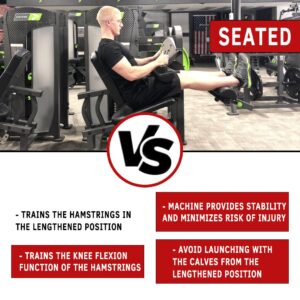
RDL VS Seated Leg Curl Programming Considerations
When programming the RDL or the Seated Leg Curl we must consider the differences in these two great hamstring developers. They have many similarities in :
- Range of Motion trained. The RDL and Seated Leg Curl both train the hamstrings in their lengthened position.
- Points of overload. The RDL and the Seated Leg Curl can both be overloaded in the lengthened position; that is assuming you have a decent seated leg curl with a good resistance profile on it. More on this later. If the Seated Leg Curl resistance profile is not this way the hamstrings are still trained in the lengthened position they just may not be overloaded there.
When it comes to programming these two movements we must look at the differences between them to help us decide which one we would use or even both.
Primary function: The hamstrings are a bi-articular muscle (crossing two joints), the knee and the hip. This gives the hamstrings two main functions: knee flexion and hip extension. This is the first thing that begins to separate these two exercises. The RDL will train the hamstrings in their hip extension function and the Seated Leg Curl trains the hamstrings in their knee flexion component.
Glutes: The RDL is not only a hamstring exercise, the glutes will work here too. If you want to train the hamstrings in the lengthened position and you would like to get some glute work in the RDL can be an excellent choice to “double dip” a bit as the glutes will be trained in their mid range during the RDL.
Spinal loading: “You only have one spine.” When choosing the RDL or the Seated Leg Curl when wanting to train the hamstrings in their lengthened position you must consider if you have loaded the spine in the programed day already or not.
If you have already done squats in your program, spinal stabilizers may be fatigued to the point where you cannot optimally stabilize the pelvis and spine for an integrated movement like the RDL. Poor or fatigued spinal/pelvic stability will lead to lower output from the hamstrings and a sub-par training effect for the hamstrings. I am not saying you can’t ever do RDLs and squats in the same day. But you must be aware of the spinal load that occurs in these movements and its effect on the training day. You better be a strong, well-conditioned person when it comes to spinal stability to do both spinal loaded exercises on the same day.
Spinal stability: Beginners often have a difficult time learning to stabilize the spine and the RDL will directly challenge this. When training a beginner and you want to train the lengthened position of the hamstrings with any form of output then the Seated Leg Curl may be a better option for them. The Seated Leg Curl is far less complex where beginners can still go and get plenty of work done. This can all be done while they are continuing to work on their spinal stability and hip hinge separately.
Types of Programming
The RDL and the Seated Leg Curl both have great application in all types of training stimuli, but some things must be considered when choosing between the two:
Systemic Training: When training for a systemic stimulus the RDL can be a fantastic choice for programming. It is an integrative movement involving a ton of musculature all contracting and dumping metabolites into the bloodstream. This is the goal of systematic training, but the RDL is a complex movement that must be executed very well in high amounts of fatigue in order for this to happen and beginners/novices may have a hard time with this. For them the Seated Leg Curl may be a better option.
Neurological Training: The goal of neurological training is not only load, it is to get the muscle to its lengthened position, overload it there and contract intensely from that position. The RDL does exactly this in hip extension while the Seated Leg Curl does exactly this in knee flexion.
Which one is better? What do you want to do? Are you doing another exercise in your program for hip extension? No. Then the RDL is your better choice. If you are already doing something for hip extension like squats then the Seated Leg Curl is your better choice for that day. If you want to do both RDLs and Squats in your Neurological program then I would advise them on different days with an appropriate number of rest days in between.
Hypertrophy Training: Hypertrophy training lends itself to many different types of same muscle supersets: pre and post exhaust, shortened-lengthened etc. Choosing the right combination for the same muscle group is crucial for the stimulus of the superset.
RDLs with Lying Hamstring Curl
A great combination for many supersets. This combination will train the full range of motion of the hamstrings with the RDL training the lengthened position and the Lying Leg Curl training the short position. This combination will also train the hamstrings in both of its functions, knee flexion and hip extension.
Seated Leg Curl and Lying Leg Curl
This combination will train the full range of motion of the hamstrings in their knee flexion component with the Seated Leg Curl training the lengthened position and the Lying Leg Curl training the short position.
RDL and Seated Leg Curl
This is just an f-you to the lengthened position of the hamstring. By overloading the hamstring in the lengthened position with the RDL and then training the hamstrings their again in the Seated Leg Curl will cause high amounts of mechanical damage to the muscle belly. This may be perfectly fine if your program is set up for more mechanical damage with proper training frequency.
Additional Considerations
Waist Line: This is something we see quite often here at N1. Poorly executed RDLs done with more low back than hamstrings or glutes will lead to hypertrophied spinal erectors. RDLs done with poor spinal stability will lead to an inappropriate amount of tension on “other” core musculature. This combination of hypertrophied spinal erectors and in appropriate core musculature leads to a disproportionate waistline when compared to the rest of the physique.
Traps: The RDL or any of its variations will all load the traps. This can lead to bigger traps and this may be something you are going for or it may be something you do not want. If you want to limit trap growth then you may have to limit how often you program the RDL in your workouts and the Seated Leg Curl may be a better option.
Understanding the differences between exercises is a critical component of intelligent exercise selection to match up for the goal of your training. Learn more about comparing exercises by using the features in the Exercise Library. It will show you all of the different characteristics of each exercise that you can compare.
Compound VS Isolation Exercises for Beginners
videoBody Composition Foundation FREE Hypertrophy Program Design TrainingHigh VS Low Frequency Training
videoBody Composition Foundation Hypertrophy Program Design Strength & Power Training
Popular Pages
Learn & Train With Us
Add N1 Training to your Homescreen!

Please log in to access the menu.
